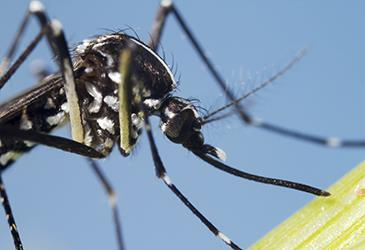The AMA and the Centers for Disease Control and Prevention (CDC) recently held a webinar to provide an update for physicians and other clinicians on the status of the Zika virus outbreak and the latest clinical guidance to help them diagnose and manage patients and prevent further transmission.
“As the Zika virus outbreak continues to evolve and more Americans become impacted by the virus,” said AMA President Andrew W. Gurman, MD,” we must ensure that our nation’s physicians, and all clinicians, are prepared to handle possible cases of the virus and are equipped with the most up-to-date information to answer patients’ questions.”
The webinar, “Preparing for Zika transmission in the United States,” is available online at the AMA’s Zika Virus Resource Center. Experts provided details of the latest epidemiological and clinical aspects of the current Zika outbreak, implications for pregnant women and the CDC’s most up-to-date clinical guidance to support health care professionals in combatting and preventing complications.

Updated pregnancy guidelines
There is emerging data indicating Zika virus RNA can be detected for prolonged periods of time in some pregnant women. The CDC hopes to increase the proportion of pregnant women with Zika virus infection who receive a definitive diagnosis by expanding real-time reverse transcription polymerase chain reaction (rRT-PCR) testing.
Testing recommendations vary according to the type and timing of possible exposure. “Possible exposure” is defined as travel to or living in an area with Zika virus, or sex without barrier protection, such as a condom, with a partner who has traveled to or lives in these areas. The CDC stressed that all pregnant women should be asked at each prenatal visit if they have had one of these exposures.
For symptomatic pregnant women, the CDC recommends:
- Those evaluated less than two weeks after symptom onset should receive Zika virus rRT-PCR testing of both serum and urine
- Those evaluated two to 12 weeks after symptom onset should first have a Zika virus immunoglobulin (IgM) test; if this result is positive or equivocal, serum and urine rRT-PCR should be performed
The CDC also delivered recommendations for testing of asymptomatic pregnant women. A flowchart detailing testing and recommendations is available on the CDC's website.
Preventing sexual transmission
Because the Zika virus can be sexually transmitted, the CDC offered new guidance for couples at risk, including:
Couples in which a woman is pregnant:
- Pregnant women with sex partners who live in or have traveled to an area with active Zika virus transmission should consistently and correctly use barriers against infection during sex or abstain from sex for the duration of the pregnancy
Couples who are not pregnant and are not planning to become pregnant:
- Couples in which a partner had confirmed Zika virus infection or clinical illness consistent with Zika virus disease should consider using barrier methods against infection consistently and correctly or abstain from sex as follows:
- Men with Zika virus infection for at least 6 months after onset of illness
- Women with Zika virus infection for at least 8 weeks after onset of illness
- Couples in an area without active Zika transmission in which one partner traveled to or resides in an area with active Zika virus transmission but did not develop symptoms of Zika virus disease should consider using barrier methods against infection or abstaining from sex for at least 8 weeks after that partner departed the Zika-affected area
-
Couples who reside in an area with active Zika virus transmission might consider using barrier methods against infection or abstaining from sex while active transmission persists.
The webinar also includes up-to-date statistics on the spread of Zika in the U.S., recommendations for counseling women and men living in areas with ongoing spread of Zika virus who are interested in conceiving, and the use of standard precautions to prevent the spread of Zika in the health care setting.
Congress must provide more resources
With an increasing number of Zika cases confirmed in the U.S., including this week’s news of the death of a newborn baby with Zika-linked microcephaly, the AMA continues to call on policymakers on Capitol Hill to immediately make the necessary resources available to combat the growing threat of the virus and protect public health. Congress failed to pass legislation to deploy a robust public health response to the Zika virus before it adjourned for summer recess.
The AMA will also continue to update its online Zika Virus Resource Center with the latest Zika-related information from CDC and other trusted organizations to support health care professionals’ efforts to prevent and combat complications from the virus.




